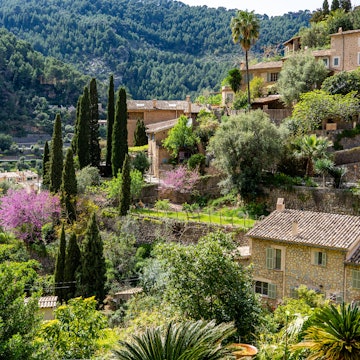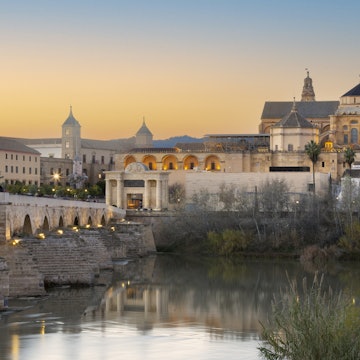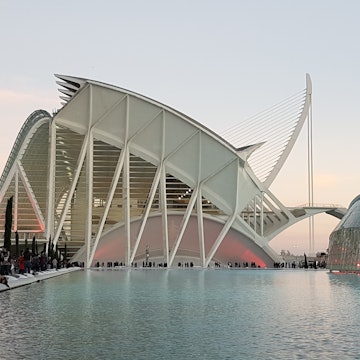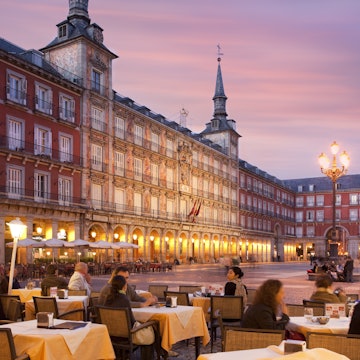
Like La Sagrada Família? Here's why you'll love the Gaudí masterpiece Casa Vicens

Apr 28, 2023 • 5 min read

Casa Vicens in Barcelona’s Gràcia neighborhood offers the riot of colors, nature-inspired forms and eclectic inspiration that typify the work of Antoni Gaudí © EQRoy / Shutterstock
Barcelona-based travel journalist and Spain expert Isabella Noble recommends an enthralling, off-radar monument for travelers keen to learn about the great Modernista architect Antoni Gaudí, with one of Barcelona’s loveliest neighborhoods right on the doorstep.
Adored by both local residents and millions of curious annual visitors, Barcelona’s landmark Modernista monuments are just as key to the fabric of the city as the tantalizing wonders of Catalan gastronomy.
From fantastical La Pedrera to otherworldly Casa Batlló, many of these are the work of the celebrated Catalan architect Antoni Gaudí (1852–1926), whose unparalleled legacy is intricately intertwined with modern Barcelona’s identity.
With so much on offer in Catalonia’s capital, it can be tricky to know where to start, particularly if you’re pressed for time or traveling on a budget. Many travelers make a beeline for Gaudí’s world-famous basilica, La Sagrada Família, which is still under construction more than 140 years after works first began. There’s no denying the awe-inspiring beauty of this colossal, living-and-breathing monument — but there is much more to Gaudí’s wonderfully varied legacy. While the architect’s headliner creations are sprinkled around elegant L’Eixample, his work can be uncovered in quieter northern pockets of town, too.

You’ve probably heard of La Sagrada Família...
First begun in 1882, La Sagrada Família is both the pinnacle of Gaudí’s career and Barcelona’s greatest temple to Modernisme. Towering over the grid-like streets just north of Dreta de L’Eixample, the monumental, Unesco-protected basilica is a feast of soaring towers, intricately sculpted facades, shimmering stained glass, forest-like pillars and nature-inspired forms. It will eventually rise to 565ft (172.5m) and have 18 towers, with completion now tentatively expected around 2032 – just in time for its 150th anniversary.
When Gaudí was fatally injured by a tram in 1926, only a small portion of the building had been completed, including the spectacularly sculpted Nativity Facade (Façana del Naixement) and the neo-Gothic crypt (where the genius is interred). Gaudí’s mission has been faithfully carried on ever since, based wherever possible on his original plans and models (though many of these were lost during the Spanish Civil War).
There’s a reason why La Sagrada Família is Spain’s most-visited monument, attracting 3.4 million visitors in 2022 (and a record 4.5 million in the years leading up to the COVID-19 pandemic). Gaudí devoted 43 years of his life to it, and you should definitely see it at some point. But if you’re keen to sidestep the crowds (it’s almost always busy) and the minimum €30 price tag, or simply fancy learning all about where Gaudí’s work began, head to the northern neighborhood of Gràcia for a less-visited masterpiece that only opened to visitors a few years ago.

...but Casa Vicens offers the perfect Gaudí experience
Wandering along Gràcia’s unassuming Carrer de les Carolines, it’s impossible to miss the curious turreted mansion with rust-red walls, jagged balconies and strips of yellow-and-aqua tiling. This is Unesco-listed Casa Vicens, Antoni Gaudí’s first ever independent commission – a luxurious summer house built between 1883 and 1885 for the wealthy trader and stockbroker Manuel Vicens i Montaner, in what was then a refreshingly green, sparsely populated area.
It took a pioneering three-year restoration project to convert Casa Vicens into a visitable monument, led by respected modern-day architects José Antonio Martínez Lapeña, Elías Torres and David García. The house finally opened to the public in 2017, and still remains a lesser-known jewel on Barcelona’s otherwise-packed Gaudí trail. In 2022, it received 126,632 visitors – you might well find yourself joined by local barcelonins also on their first-ever visit.
Gaudí was just 30 years old when the project kicked off. Fresh out of architecture school, he used traditional local materials and techniques (papier-mâché, tile work, sgraffito, wooden beams) in highly innovative ways to create one of the earliest wonders of Catalonia’s Modernisme movement. From the rustling palm-filled gardens to the tile-covered bathrooms, the whole place is a riot of color that combines elements of Moorish, neoclassical and various Asian-inspired architectural styles. Stepping into the ground-floor sala de fumadors (smokers’ room), for example, Andalucía’s Alhambra instantly springs to mind thanks to the elaborate blue-and-gold muqarna niches.
As always in Gaudí’s work, nature provided a constant source of inspiration. The distinctive marigold tiling mirrors flowers that were already growing here in the 1880s; the elaborate iron gates feature the shape of local fan palms; and every room is designed to bring the lush gardens into the house itself, with leafy motifs ranging from twirling vines to blue-tinged passionflowers.
After exploring the ground floor’s grand dining room (still flaunting its original Gaudí-designed wooden furniture) and covered porch (refreshed by a tinkling fountain), you’ll be whisked up to three ornate family bedrooms and a sun-washed terrace on the first floor. On the top level, you can take in intriguing models of the house and a collection of Gaudí’s letters, before emerging on the meandering rooftop.
For anyone who has savored the flowing design of Gaudí’s La Pedrera and Casa Batlló (which both date from the early 20th century), or glimpsed the organic shapes of La Sagrada Família, Casa Vicens feels strikingly different. But many elements that pop up here became key features for the architect’s more-celebrated later creations, such as the endless plant-world motifs, the Catalan vaults in the basement and the walkable rooftop terrace with its angular towers. Gaudí was also behind Casa Vicens’ evocative gardens, which originally included a monumental fountain that was sadly demolished in 1946.
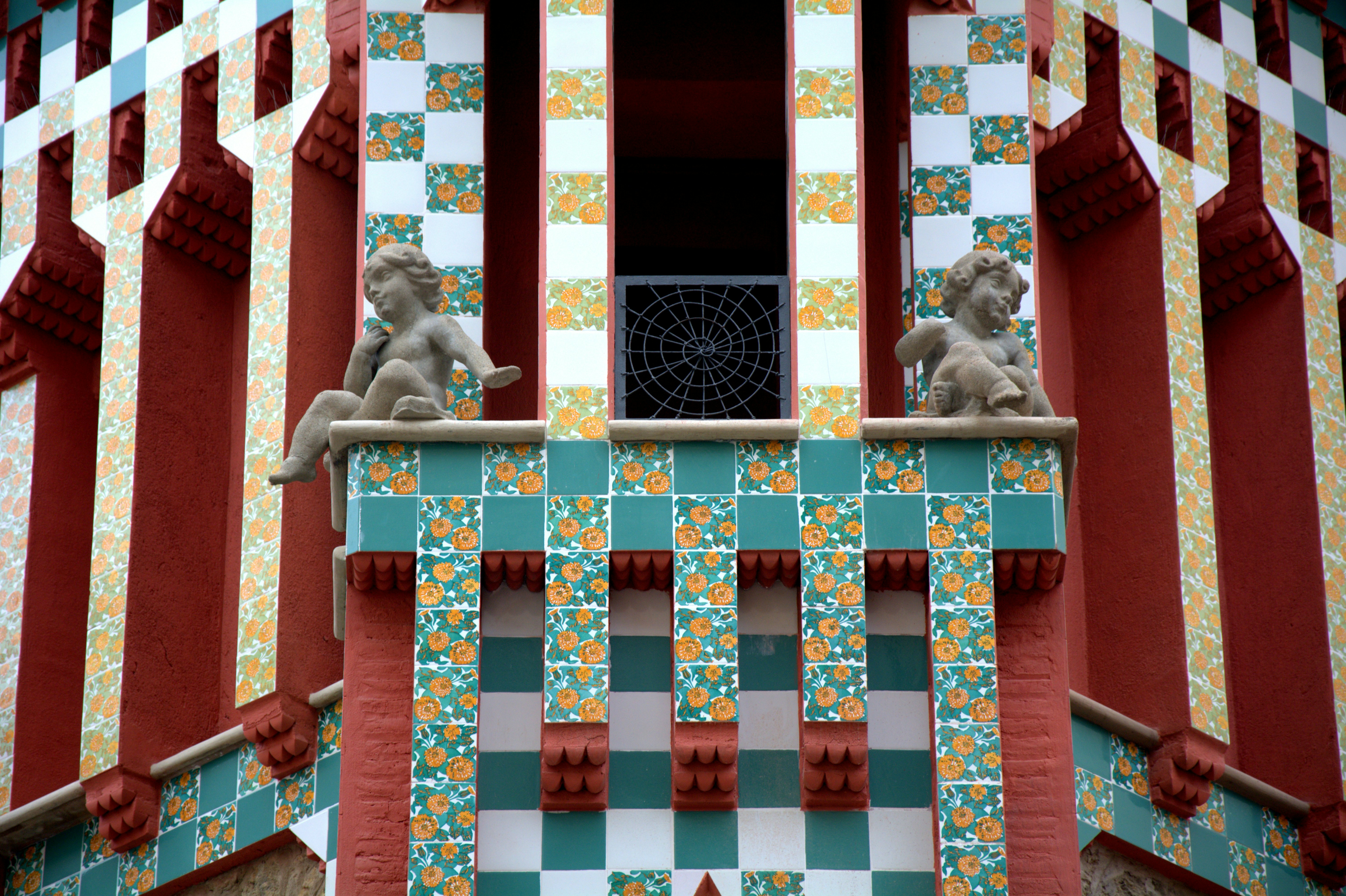
Importantly, Gaudí only designed half of the building you’ll see today. The eastern section of the house is the work of the Catalan architect Joan Baptista Serra de Martínez, who in 1925 extended the property onto the site of a now-lost convent; if you look closely, you’ll spot subtle differences in the exterior tile work. During the recent restoration, an award-winning, contemporary staircase painted completely white was integrated into this newer 20th-century section.
Once you’ve had your fill of Casa Vicens itself, wander down through lively Gràcia, known for its village-like plazas, buzzy vermouth bars (I love Bodega Neus and La Vermu), stylish independent boutiques, popular specialty-coffee spots (try SlowMov or El Noa Noa) and the wonderful Mercat de la Llibertat (another Modernista beauty, by Francesc Berenguer i Mestres).
How to make it happen
Casa Vicens is open daily from 10am (closing times vary seasonally) and is easily accessible on Barcelona’s efficient metro (take L3 to Fontana or Lesseps). It’s worth booking tickets ahead (adults €17, children free), particularly for the excellent tours (€21), led by highly engaging guides who bring the building and its historical context to life.







